Consider the benefits of employee engagement survey initiatives. Done right, they can boost productivity and minimize turnover. Here’s how …

.png)
Strategy is an important component of internal communications. Ensure you’re communicating through the right channels at the right frequency with our Internal Communications Channel Audit worksheet.
Access NowEmployee engagement surveys play an instrumental role in enhancing company culture, boosting productivity, and ensuring fewer employees leave the organization. This means it’s a no-brainer to undertake employee engagement surveys, but they need to be meaningful and employee feedback needs to be assessed, evaluated, and acted on.
According to Gallagher’s State of the Sector 2022/23 survey report, 84% of respondents agree that their organizations value employee feedback. Asked which listening channels organizations had used in the previous 12 months, 69% identified engagement surveys. This was the most popular listening channel, indicating that employee engagement surveys are more highly regarded than email (55%), feedback from people managers (51%), one-to-one interviews (46%), and even pulse surveys (43%).

Still, only 65% say the organization actually learns from and acts on employee feedback. Only 47% have a robust process that enables them to capture employee insights and feedback. And, little more than half (55%) regard their organizations’ channels as acceptably effective when it comes to gathering feedback.
In this article, we’re going to start by discussing what employee engagement surveys are and delve into the benefits of employee engagement survey projects. We’ll look at the traditional benefits of these surveys and identify some of the benefits we tend to overlook. To help you make the best of your employee engagement surveys we’re going to discuss the best practices to follow. This involves assessing and communicating employee engagement survey results.
An employee engagement survey is a systematic tool implemented by organizations to measure the level of engagement among employees. Employee engagement, in this context, refers to the degree to which employees feel connected to their roles, are committed to the company's mission, and are motivated to deliver their best work. Employee engagement surveys usually encompass questions on a range of parameters that influence employee satisfaction. They often relate to working conditions, supervisory support, compensation, professional development opportunities, recognition of efforts, and the importance of flexibility.
Survey responses can provide valuable insights into how invested employees are in the organization's growth. When the right questions are asked, they will also indicate employees' willingness to go beyond the call of duty to contribute to its success.
As mentioned above, Gallagher’s most recent State of the Sector report shows that employee engagement surveys are the preferred listening channel to collect employee views and feedback. By quantifying the degree of employee engagement, organizations can identify areas of improvement and create a better work environment that motivates and rewards employees.
The report also shows that pulse surveys are also relatively highly regarded - fifth on the list that employee engagement surveys top. While pulse surveys may be used to gauge employee sentiments and satisfaction, they are shorter, more frequent, and highly targeted feedback mechanisms. They are used to capture real-time employee sentiments on specific issues or events, offering organizations quick snapshots to identify emerging trends and address immediate concerns. Employee engagement surveys are considerably more comprehensive and are designed to provide more in-depth insights about your employees’ mindsets.
Upgrade your company’s internal comms to enhance employee communication
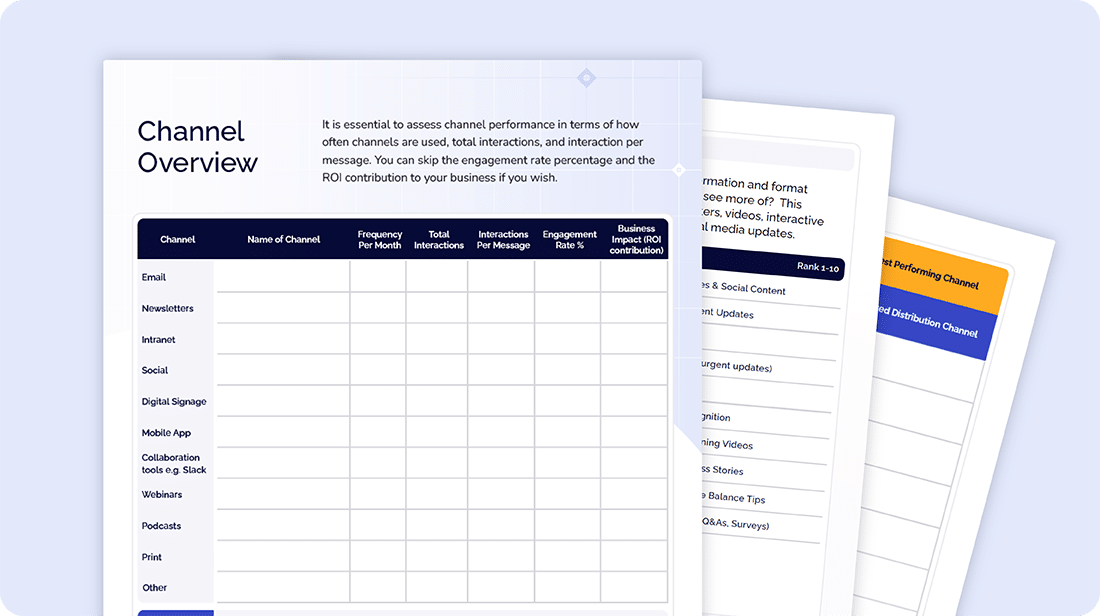
The chief purpose of employee engagement surveys is to gauge the attitude, sentiment, and satisfaction of employees toward their workplace. In its 2024 Employee Engagement Strategies Checklist, Gallup states that the purpose of an employee engagement survey is to help employees communicate their needs and let managers know which of these they should prioritize.
Of course, companies like Gallup carry out definitive national and global employee engagement surveys that provide a much bigger picture of employee engagement trends. For example, in an article by Gallup scientist, Jim Hartner, titled In New Workplace, U.S. Employee Engagement Stagnates, we learn that 33% of U.S. employees were engaged during 2023. This dropped from 34% mid-2023 and is considerably lower than the all-time high of 40% reported by Gallup mid-2020 - which reduced to 36% for the full 2020 year.
“In 2023, employees in the U.S. continued to feel more detached from their employers, with less clear expectations, lower levels of satisfaction with their organization, and less connection to its mission or purpose, than they did four years ago. They are also less likely to feel someone at work cares about them as a person.”
Jim Hartner
While the type of research Gallup undertakes gives us an overview of how employees in general feel, and the changes they’d like to see, there’s no way they can identify specifics within individual organizations. However employee engagement surveys undertaken by companies, or even team leaders within organizations, can do this impressively well.
Ultimately, employee engagement surveys can become a highly effective instrument for HR teams to track the effectiveness of their engagement strategies. They also help HR professionals to make informed decisions regarding policy changes, training programs, and workplace culture enhancement.
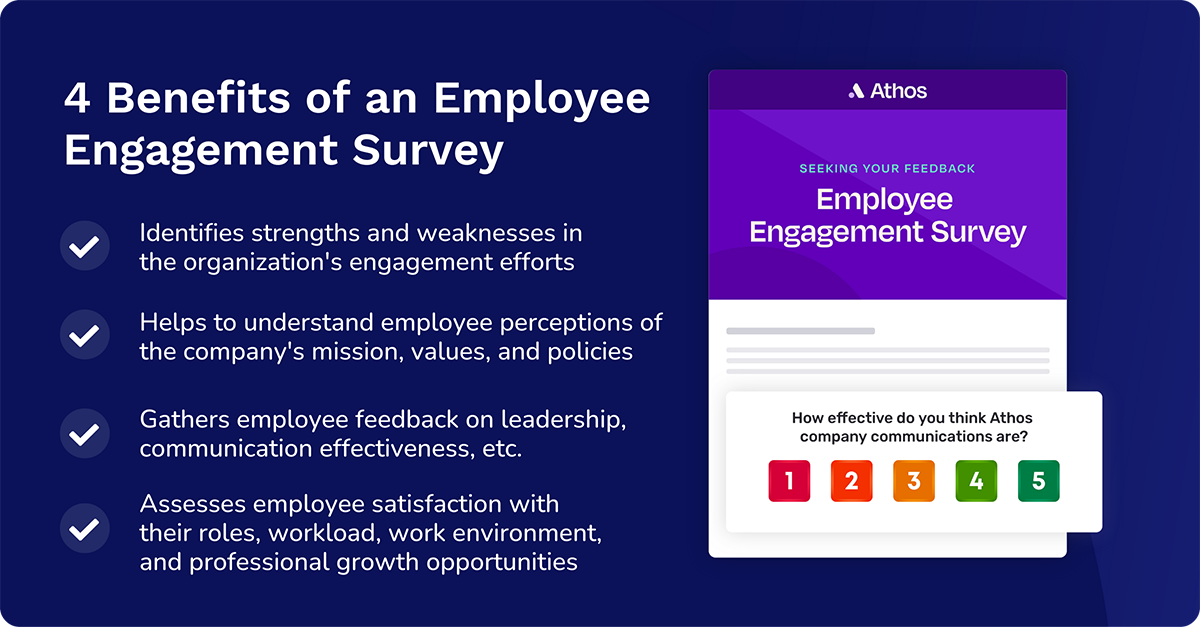
The benefits of employee engagement survey undertakings extend beyond merely measuring the engagement score for record-keeping purposes. They can provide several tangible and long-lasting advantages to the organization.
Employee engagement surveys show employees that their opinions matter, boosting morale. When staff members know that their input is valued and will be acted upon, job satisfaction generally increases. For instance, if data shows that a significant number of employees are dissatisfied with their work-life balance, the organization might (should) consider revising its flexible working policies to address these concerns. This will ensure each team member feels heard and it can foster a sense of belonging within the organization.
The positive effects of using employee surveys are confirmed in the Employee Engagement Trends 2023 Report, Driving Employee Success by Quantum Workplace. Based on responses by over 1-million employees from more than 9,000 organizations:
Employees who are happily engaged in their work are known to be more productive. The Quantum survey states that 22.8% of respondents say that employee surveys increase productivity.
When organizations carry out employee engagement surveys, responses can help to motivate decisions to modify or introduce new policies that boost productivity. Engagement surveys can also highlight the relationship between employee engagement levels, satisfaction, and performance outcomes, guiding better performance management strategies.
Upgrade your company’s internal comms to enhance employee communication

Employee engagement surveys can produce numerous indirect benefits that are often overlooked. Recognizing these can help organizations leverage their engagement surveys to their full capacity.
Employee surveys act as an effective communication channel, fostering open and constructive dialogue between management and employees. They demonstrate that senior management is open to feedback and keen on making improvements, in this way fostering trust and transparency.
Surveys can help identify gaps in skills and knowledge that can impede employee performance. For instance, survey results can reveal if employees feel they need training to be able to effectively use a particular software tool. Results may also show that many employees feel that they aren’t properly prepared for the changes brought about by digital intelligence. Knowing how they feel allows organizations to tailor their training programs according to actual needs, enhancing their effectiveness.
Employee engagement surveys can act as an early warning system for potential problems. Whether it's festering team conflicts, declining morale, or brewing dissatisfaction with leadership, frequent employee engagement surveys can bring these to the fore before they escalate. You can also use pulse surveys to identify employee engagement issues.
Survey feedback can provide insights into how employees perceive company culture — which behaviors are appreciated, which are discouraged, how welcome they feel in voicing their opinions, and so on. This can guide the HR team in its efforts to build a positive, inclusive, and high-performance company culture.
Engagement surveys often contain questions about employee well-being, work stress, and work-life balance. Regularly addressing these aspects can reveal whether the current work environment is conducive to employee health and happiness. HR teams can then initiate timely interventions to foster employee well-being and reduce burnout.
As engagement surveys often bring to light the factors impacting an employee's decision to stay or leave, they can assist with talent retention strategies. For instance, if the survey reveals high levels of dissatisfaction with career growth opportunities, the organization might revamp its career development programs to retain its talent pool.
According to the Achievers Workforce Institute 2023 Engagement and Retention Report, The future is flexible, employees who say their employer takes meaningful action on their feedback are 37% less likely to hunt for a new job.
Employee engagement surveys can indicate whether employees feel encouraged to think creatively, come up with new ideas, and take risks. Whether it's about finding a better solution to a client's needs or improving internal processes, organizations that understand and act on these insights are more likely to foster a vibrant company culture of innovation.
Engagement survey results can be used for performance benchmarking, both internally over time and externally against industry standards. Tracking engagement scores over time helps monitor the impact of new policies. On the other hand, comparing them with the industry average offers an understanding of the organization's standing in the market.
Employee engagement surveys often feature questions on recognition and rewards, offering insights on whether employees feel appreciated for their work. Recognition is a vital component of employee satisfaction and motivation, and addressing it can significantly boost engagement levels.
Last but not least, engagement surveys provide data that guides strategic decision-making. Be it about a change in HR policies, launching a new training program, or deciding on employee benefits, survey results offer meaningful, data-driven insights to shape these decisions.
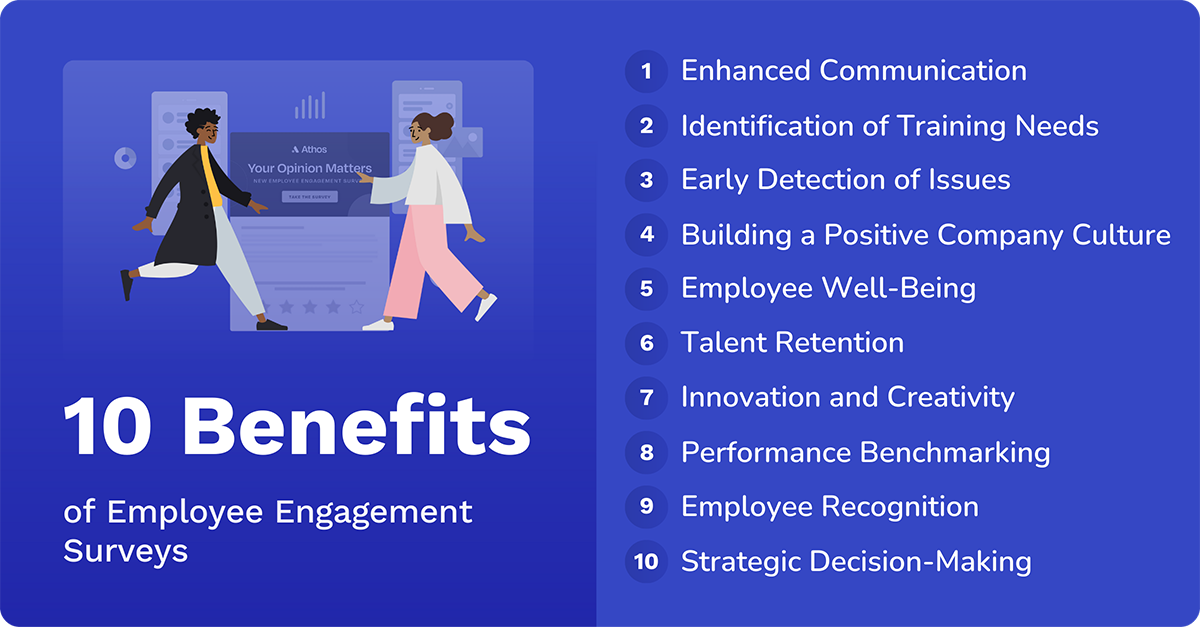
Effectively conducting an employee engagement survey requires careful attention to the survey design, execution, and follow-up. These are some of the best practices to make sure your engagement survey reaps maximum benefits.
The format of your survey must align with its objectives. Surveys can be measurement-focused, relying on rating scales to capture quantitative data, or open-ended, providing qualitative data about employee attitudes, experiences, and ideas. They may also be a mix of these two types.
Anonymity (or the option for anonymity) is crucial for gathering honest feedback. Employees should feel confident that their survey responses won't affect their job security or professional relationships. Assuring them of this confidentiality can improve the authenticity and accuracy of survey responses.
In its 2024 Employee Engagement Strategies Checklist, Gallup advises that organizations should avoid sending out surveys for input at peak work times and during holidays. This is simply so they have time to complete it. It’s also important that those assessing the results and acting on the goals derived from the survey results have time to do so with proper thought and consideration.
Sean McPheat, a management and leadership training specialist at MTD Training in Coventry, UK, and a Top Leadership Voice at LinkedIn, pinpoints a kind of irony that relates to employee engagement surveys. Essentially, it's vital to ensure that employees are sufficiently engaged to complete these surveys. They also need to know about the important role they can play by participating.
“What we find is most important when attempting to get employees engaged enough to complete surveys, is to explain the reason why they are taking place. They are not just to 'check-up' on what's going on. Team members need to be clear on why their voice is important, and how their comments can influence the future direction of the company.” Sean McPheat
After the survey, it's important to communicate the results to employees, showing them how their feedback was used and what actions will be taken as a result. This transparency improves trust and raises the response rates of future surveys, assuring employees that their input leads to tangible improvements.
“An engagement survey is the starting point, not the ending point, of motivating employees. You must act on the results you gather, or you could cause more harm than good.” Gallup
If you don’t follow through and take action on the results, there’s a good chance that employee engagements will decrease. Gallup warns that turnover will also increase. After all, if you ask for feedback and then ignore it, you’re going to spark resentment.
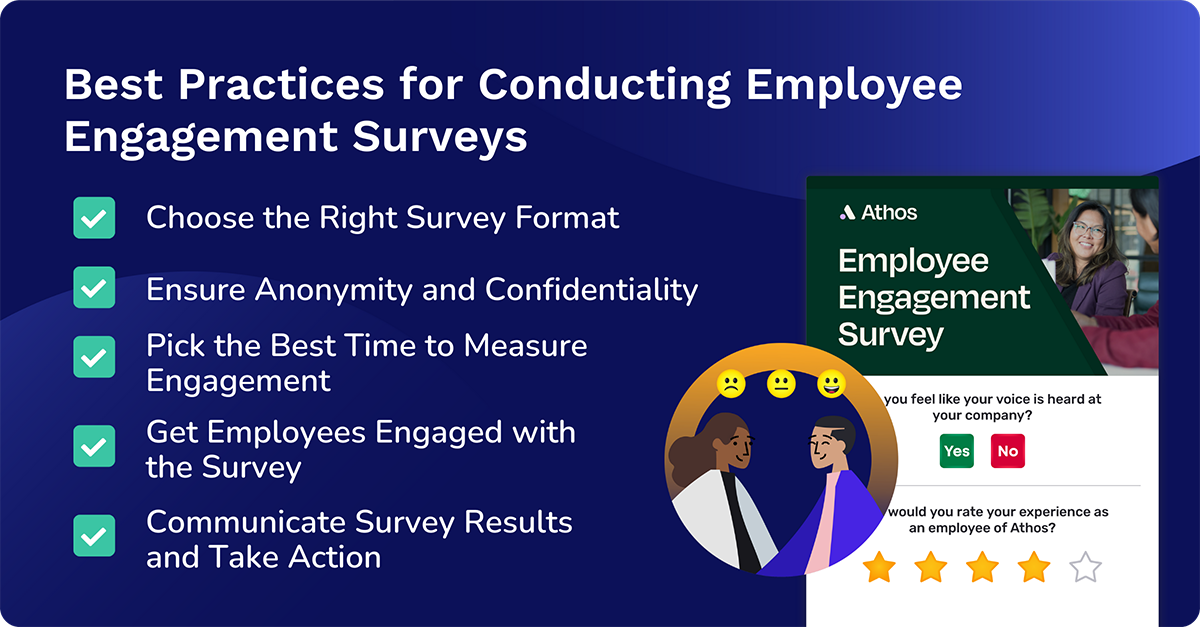
Cerkl Broadcast is an internal communications platform designed to modernize how companies communicate and engage with their employees — and understand them. It offers many features including email blasts with drag-and-drop elements and templates. Whether you want to send a sales message, share policy updates, or generate a survey, you can start with an existing template or create your own. Templates simplify the creation of consistent, professional-looking content for any communication plan including an employee engagement survey.
Once you’ve prepared your employee engagement survey, you can merge fields like employee name, email address, department, and so on, and schedule when you want to send the message. You can also segment your audience based on department, role, or location.
Broadcast also offers full analytics so that you can pinpoint important responses including deliveries, unique opens, and unique clicks, according to each campaign. It offers 23 customizable insights including open rates and engagement scores as well as channel category metrics.
The next step is to audit your communication channels. With our internal communications audit template, you will receive suggested employee survey questions.
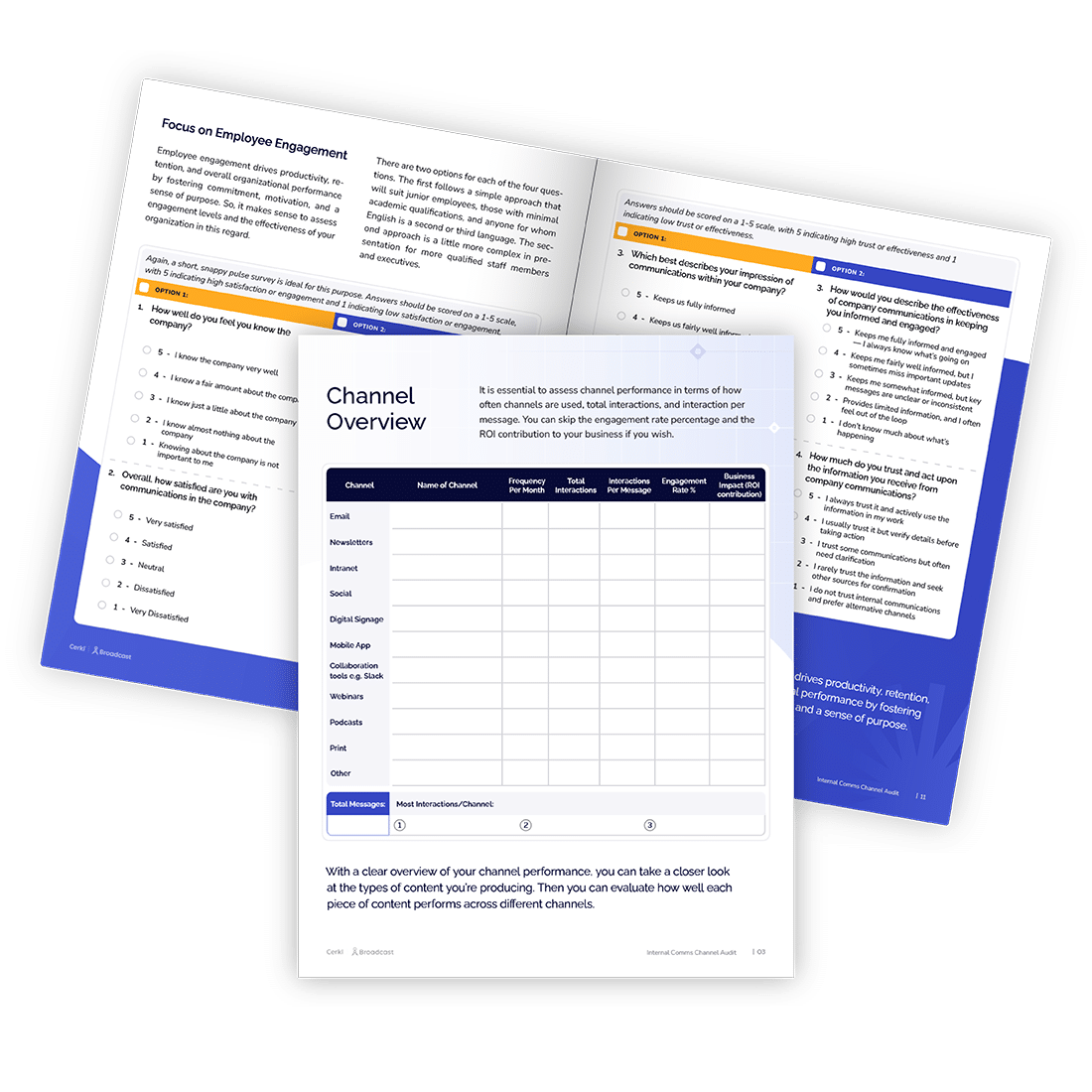
Upgrade your company’s internal comms to enhance employee communication
What are the benefits of employee surveys for employees? Employee surveys provide a platform for employees to voice their opinions, concerns, and suggestions. This approach fosters a sense of empowerment and inclusion within the workplace. It also promotes transparency and open communication between employees and management.
Why are employee engagement surveys important? Employee engagement surveys are crucial for gauging the overall satisfaction and commitment of employees. Analyzed and assessed correctly, they can help organizations identify areas for improvement, boost morale, and create a positive work environment that contributes to increased productivity and retention of employees.
What are the key benefits of employee engagement? Key benefits of employee engagement include improved job satisfaction, heightened motivation, increased productivity, enhanced collaboration, and a positive impact on overall organizational performance and profitability.
Are employee engagement surveys worth it? Employee engagement surveys are generally worth the time, money, and effort they involve. They provide valuable insights into overall sentiments of the workforce allowing companies to make informed decisions, address issues proactively, and create a workplace culture that supports both individual and organizational success.

Upgrade your company’s internal comms to enhance employee communication